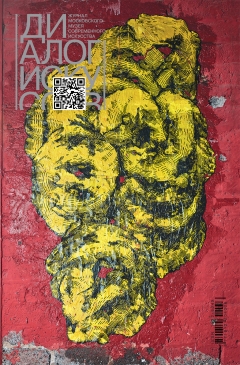Sergey Guskov. When you studied in De Appel and worked in different institutions, you had an experience of collective curating. Do you miss it now on the biennale of young art?
Lucrezia Calabro Visconti. I enjoy very much curating in a group rather than by myself: the process of thinking about all the different aspects of a project is way more exciting and challenging when it is done in dialogue with other brains instead than in a monologic form. Still, I have to say that I think a project is never actually conceived and produced by one person alone. First of all there are the relationships with the artists and their research, which are usually my starting point to construct a project. Secondly, there is the dialogue with the other figures involved in the development of the exhibition: in the case of Abracadabra for example, the involvement of Ambra Pittoni and Paul-Flavien Enriquez-Sarano in the educational programme was a very important choice for me, in order to find interlocutors with whom to exchange ideas and with whom to build different operational perspectives on the shared themes of the biennale. Thirdly, the friends I share thoughts with, the authors who wrote the books I have been reading while constructing the show, the curators of the exhibitions I visited in my life are as well very important interlocutors of the project. It may sound naive, but I genuinely think one’s project is always a sentence of a wider collective discourse, in which it is important not who said one specific thing, but rather the attempt to keep the discourse going!
S.G. What do you think about the concept of the biennale of young art? Some people criticize it as a segregation of elder artists or, vice versa, of young artists; some say that it's a commodification of artists who haven't been found yet and absorbed by market, and others suppose that this is one of the best ways to support artists who have just started their careers.
L.C.V. I think limitations can be very interesting devices when used to experiment different ways to do things and question established etiquettes. Speaking of supporting young artists—and artists in general—I think there is the need for structural support that an organisation like the biennale is not enough to provide. What the biennale offers is mainly visibility, which is an important feature of course, but shouldn’t replace concrete politics aimed at building a platform for the support, funding and training of art- ists. Also, the range of “youth” consid- ered by the biennale—and by most “youth-related” projects globally—goes from 18 to 35 years old. We are talking about a range of almost 20 years, in which the youngest and the oldest artists have very different needs, competencies, professionalism. This label really needs to be looked at critically, and I think what is good of the biennale project is that it raises the urgency to discuss these issues: what do we mean when we talk about “support” (i.e. how is it possible to aim to have an international reach when the politics concerning artists’ fees differ so much from country to country?) and what do we mean when we talk about “youth”.
S.G. If you were invited to curate a bien- nial of old artists (older than 60 for example), would you accept this invitation and who would you choose for your project? What could be the title for this project?
L.C.V. Well, I would accept the invitation but propose to re-schedule the biennale 50 years from now, and I would call back exactly the same artists featured in Abracadabra now, to see how their works have changed over the years! Jokes aside, your question is very much on point. I have often been questioning myself on how the 35 years old age limit—and the corollary issues related to youth, time and history that it car- ries with it—could be addressed as a productive tool for experimentation and research. Funnily enough, while building up the show, my thoughts kept running towards a very “old” figure, Simone Weil. In fact, the philosopher, activist and mystic died in 1943 when she was 34, therefore, technically speaking, if she applied to the open call of Abracadabra, her submission would have been legally accepted by the organisation. Does youth persist, even after death?
DI # 3-2018




